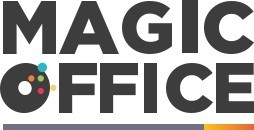The role of the Debt Management Office (DMO) in the UK
Understanding the debt management office
The Debt Management Office (DMO) in the UK plays a pivotal role in managing the nation's debt. Established as an executive agency of Her Majesty's Treasury in 1998, the DMO is responsible for carrying out the United Kingdom government's debt management policy. This involves borrowing on behalf of the government, ensuring that its debt portfolio meets the objectives of cost and risk management.
Functions and responsibilities
The DMO's primary function is to minimize the cost of government borrowing over the long term, taking into account risk management considerations. It achieves this by issuing government bonds, known as gilts, and treasury bills. Additionally, the DMO manages the Exchequer's cash needs efficiently to avoid unnecessary borrowing costs. The agency also provides market intelligence and advice to the Treasury.
Strategic priorities
According to recent reports, the DMO is focused on ensuring that the government's financing needs are met, the government's debt portfolio is managed efficiently, and the market for gilts is supported. For instance, in the 2022-2023 financial year, the DMO issued £183.7 billion in gilts, an increase from the previous year's £167.3 billion.
Leadership and oversight
Leadership within the DMO is crucial for its operations. Robert Stheeman, the Chief Executive of the DMO, has been a key figure in the organization since 2003. His expertise, along with that of Jessica Pulay, the DMO's Managing Director of Finance, is instrumental in steering the agency's strategy and operations.
Challenges faced
Despite its successes, the DMO faces several challenges, including market fluctuations and political uncertainties. For example, during the Brexit negotiations, the volatility in the market added to the complexity of managing the UK's debt portfolio. Additionally, the DMO must constantly adapt to changes in investor sentiment and economic conditions.
In subsequent sections, we will delve deeper into the key figures and data on UK government debt, the process of issuing gilts, and the impact of green bonds on debt management.
Key figures and data on UK government debt
Key statistics and data on uk national debt
Discussing UK national debt, it's necessary to dive into the figures. As of January 2023, the UK's public sector net debt was £2.49 trillion, equating to 99.6% of GDP. This marks a significant rise from previous years. A notable point is that in the financial year 2021/22, the UK government borrowed £151.8 billion, down from a pandemic-high of £317.6 billion in 2020/21.
To put things into perspective, this enormous debt is managed meticulously by the Debt Management Office (DMO). They are responsible for ensuring that the government's borrowing needs are met cost-effectively. In the financial year ending March 2022, the DMO performed 107 gilt auctions, raising £194.9 billion. Notably, the yield on these gilts is a critical factor; higher yields mean higher costs for the government.
How the treasury and DMO strategize gilt issuance
There's an intricate process behind the issuance of gilts and treasury bonds. They play a crucial role in raising funds for the government. The DMO works closely with the Treasury to determine an issuance strategy. This involves consultations with market participants to ensure that the needs of investors are met while optimizing the cost to the government.
An example of a strategy used is the issuance of 'Green Gilts,' introduced in 2021. They raised £16 billion through two issuances, which was directed towards funding green projects. This not only supports environmental goals but also attracts a niche segment of investors focused on sustainable investments.
Debt management and cash handling for the exchequer
Cash management is another critical area handled by the DMO. They manage the government's Exchequer account, ensuring that there is enough liquidity to meet day-to-day operational needs. The DMO forecasts cash flows and manages short-term borrowing and lending. For the 2021/22 financial year, the DMO's net cash requirement from the national loans fund was forecasted at £234.7 billion.
This meticulous cash management involves using instruments such as Treasury Bills, which are short-term government securities. In the 2021/22 financial year, the DMO issued £107 billion worth of Treasury Bills, ensuring that the government maintained adequate cash balances.
Green bonds and their impact on the UK's debt strategy
Green bonds have gained traction in recent years as a tool for sustainable financing. The UK’s green gilt program is a significant move towards integrating sustainability into debt management. The debut green gilt issuance in 2021 attracted over £100 billion in orders, a record for any sovereign green bond. This underscores the market’s appetite for sustainable investment options.
Green gilts not only finance environmentally-friendly projects but also help the UK government to diversify its investor base. According to Robert Stheeman, Chief Executive of the DMO, "The strong demand for our green gilts highlights the increasing importance of sustainability in investment decisions."
For those interested in improving financial management in their own offices, you might want to read this blog.
Expert insights from robert stheeman and jessica pulay
When discussing debt management in the UK, it would be remiss not to mention the pivotal roles played by Robert Stheeman and Jessica Pulay. Robert Stheeman has been the Chief Executive of the DMO since its inception in 1998. Under his leadership, the DMO has successfully navigated numerous financial challenges, including the 2008 financial crisis and the economic fallout from Brexit.
Jessica Pulay, Co-Head of Policy and Markets at the DMO, has been instrumental in designing and implementing debt issuance strategies. She emphasizes the importance of transparency and market engagement in achieving the DMO's objectives. Jessica says, "Maintaining open dialogue with market participants helps us better understand investor needs and manage the cost of government borrowing."
The process of issuing gilts and treasury bonds
How the government issues gilts and treasury bonds
The process of issuing gilts and treasury bonds is a cornerstone of the Debt Management Office (DMO)'s role in the UK. These instruments provide a way for the government to raise money by borrowing from investors, both domestically and globally. Understanding the intricacies of this process is crucial for comprehending how the UK manages its debt.
The DMO oversees the issuance of government debt instruments through a structured auction process. This auction invites a wide range of investors, including pension funds, insurance companies, and foreign governments, to purchase gilts and treasury bonds. According to the DMO's official website, the UK government typically holds around 40 gilt auctions annually, facilitating a transparent and competitive marketplace.
In these auctions, the DMO announces the terms and conditions for each security being offered, including the maturity date and interest rate. The investors then place bids specifying the amount they are willing to purchase and the price they are prepared to pay. The DMO allocates the gilts or treasury bonds to the highest bidders until the entire issue is sold.
One notable figure in the UK’s debt management landscape is Robert Stheeman, the Chief Executive of the DMO. Stheeman, who has led the DMO since 2003, plays a significant role in ensuring that the UK government's borrowing needs are met efficiently. In an interview with The Financial Times, Stheeman stated, “Our primary objective is to minimize the cost of government debt over the long term, taking account of risk exposure.”
The DMO employs various issuance methods to cater to different types of investors. For example, it utilizes syndications and mini-tenders besides traditional auctions. Syndications allow the DMO to directly sell gilts and treasury bonds to a group of selected investors, typically for larger or more complex issues. Mini-tenders are smaller, more flexible issues announced at short notice.
Cash management and settlement are vital components in the issuance of gilts and treasury bonds. The DMO collaborates with the Bank of England to ensure efficient cash flow and settlement processes. The Bank of England acts as an agent in settling transactions and managing the Exchequer's cash requirements.
Green bonds have begun playing a more prominent role in the UK's debt issuance strategy. Launched to fund environmentally friendly projects, these bonds align with the government's commitment to tackling climate change. As of 2021, the UK had issued its first green gilt, raising £10 billion to finance projects in areas such as clean energy and transport.
For a comprehensive understanding of the UK's debt management strategies and their impact on government borrowing, check out our blog on optimizing your company's financial resources.
Cash management and the Exchequer
Efficient cash management and the role of the Exchequer
The Debt Management Office (DMO) has its hands full with managing the national debt, but they also have a fundamental role in cash management for the Exchequer. This might sound like a fancy job title, but it's all about ensuring that the government has enough cash to fund its daily operations efficiently. Let’s break it down.The Exchequer’s cash flow juggle
Imagine trying to balance your household budget without knowing when your next paycheck will come in. Now, multiply that by a million, and you’ve got an idea of what the DMO deals with. The DMO forecasts the amount of money the government needs daily and balances it against its expenditures. If there’s a shortfall, they raise funds either through borrowing or issuing Treasury bills. They aim to manage cash in a way that minimizes the cost to the taxpayer while making sure the government can meet its obligations.Borrowing and lending: keeping the balance
When it comes to borrowing, the DMO is quite the expert. They begin by estimating net cash needs and then initiate borrowing activities to cover any deficits. Treasury bills and short-term borrowing play a massive role here. For instance, in the financial year 2021-22 alone, the UK issued £305 billion worth of Treasury bills. On the flip side, having more cash than anticipated isn’t necessarily a walk in the park. Excess cash must be dealt with efficiently. The DMO either maintains cash balances with institutions like the Bank of England or engages in lending activities in the financial markets. This strategic approach ensures that funds are managed professionally and effectively, reducing any potential wastage.Experts on cash management: insights from the inside
Experts like Robert Stheeman, Chief Executive of the DMO, often shed light on their strategic approach to both debt and cash management. Robert has emphasized the importance of flexibility and responsiveness in managing the ever-changing financial needs of the government. His insights often highlight the complex interplay between borrowing, lending, and maintaining cash flow, ensuring the Exchequer's stability.Reporting and transparency
Transparency is essential in such activities, and the DMO publishes numerous reports outlining their strategy and performance in managing the Exchequer’s cash. For example, their “Annual Review” and “Quarterly Reports” detail the state of public sector funds, net cash flows, and the efficacy of their cash management strategies. These reports are pivotal for analysts, investors, and the public to understand how their money is being utilized. Cash management doesn’t just end here; the DMO’s efforts tie closely with the issuance of green bonds and sustainable finance initiatives. Stay tuned to understand how these green initiatives impact the DMO’s role in the next section.The impact of green bonds on debt management
Green bonds: a breath of fresh air for debt management?
Green bonds have emerged as a crucial tool in the UK's debt management strategy. Unlike traditional government debt instruments, these bonds are specifically designed to fund projects with environmental and sustainable benefits. Issued by the Debt Management Office (DMO), they've become increasingly attractive to both investors and the government.
The UK issued its first green gilt in September 2021, raising £10 billion. A second one followed in October of the same year, adding another £6 billion. These figures point to the growing demand for environmentally responsible investment options.
Robert Stheeman, the Chief Executive of the DMO, noted, "The positive reception for our green gilts demonstrates not only the appetite for high-quality, sustainable investment but also the UK's commitment to tackling environmental issues."
According to the Office for National Statistics (ONS), these green bonds have funded projects linked to clean transportation, renewable energy, and climate change adaptation. This strategy aligns with the UK's target to reach net-zero emissions by 2050.
On the controversy front, while green bonds have been welcomed, critics argue that they might not be as 'green' as they appear. There have been debates over how 'green' projects are certified, and some experts feel that the standards need tightening to avoid greenwashing. Furthermore, as these projects are typically long-term, predicting their actual impact on the environment, and therefore on debt management, remains complex.
A study by the Bank of England revealed that green bonds tend to yield lower returns than conventional gilts, which might deter some investors concerned with short-term profit rather than long-term sustainability. However, many institutional investors prioritize the positive exposure and social responsibility associated with green investments.
Jessica Pulay, the Deputy Chief Executive at DMO, stated, "We are constantly evolving our approach to make sure we maintain integrity and transparency in our green financing initiatives. This includes strict monitoring and reporting mechanisms."
The emergence of green bonds marks an innovative step in the evolution of the UK's debt management. The growing interest underscores the importance placed on sustainability not just among policymakers but also investors looking to play a role in positive environmental change.
Expert insights: Robert Stheeman and Jessica Pulay
Insights from the experts: Robert Stheeman and Jessica Pulay
When discussing the Debt Management Office UK, it's impossible not to mention two of the most prominent figures: Robert Stheeman and Jessica Pulay.
Robert Stheeman’s impact on the DMO
As the Chief Executive of the DMO, Robert Stheeman has significantly influenced the UK's debt management policies. He has overseen the issuance of UK government bonds, also known as gilts, and has worked tirelessly to ensure that the debt management strategies align with both fiscal responsibility and market stability.
Stheeman has been quoted as saying, “Our primary goal is to support the government’s financing needs while managing risk and reducing costs to taxpayers.” Under his leadership, the DMO successfully issued £486.6 billion worth of gilts in the 2020-21 fiscal year, demonstrating his effective management amidst unprecedented economic challenges.
Jessica Pulay: A driving force for innovation
Jessica Pulay, serving as the DMO's Co-Head of Policy, Markets and Operations, has played a critical role in spearheading initiatives related to green bonds and sustainable finance. Her efforts have been vital in integrating environmental considerations into the UK's debt management policies.
Pulay has advocated for the issuance of green gilts, which aim to fund environmentally-friendly projects. A noteworthy achievement under her guidance was the successful launch of the UK’s first green gilt in September 2021, raising £10 billion, which was earmarked for environmental infrastructure projects.
Pulay emphasizes the importance of sustainable finance, stating, “Green bonds are not just about raising funds; they reflect our commitment to an environmentally sustainable future and transparent use of public resources.”
The collaboration’s broader impact
The combined efforts of Stheeman and Pulay have resulted in various successful debt management strategies. Through their leadership, the DMO has maintained a stable investment climate, increased transparency, and broadened the scope of financial instruments available to investors.
For instance, their collaborative work led to the development of the UK’s National Savings and Investments’ products, which provide a low-risk option for the public to participate in government debt financing. As of March 2021, NS&I had raised £18.1 billion towards the UK’s financing needs, exemplifying the duo’s effective strategy in diversifying funding sources.
Challenges and controversies
Like any public agency, the DMO has not been immune to controversies. Stheeman and Pulay have had to navigate criticisms related to the management of public sector funds and the perceived risk of increasing national debt levels. Despite these challenges, their open communication and transparent policies have generally fostered trust and credibility among stakeholders.
For example, the fluctuating interest rates have posed challenges in maintaining the cost-effectiveness of debt servicing. Critics argue that higher interest rates could increase government borrowing costs significantly. However, Stheeman and Pulay’s proactive risk management strategies, such as issuing long-term gilts, aim to mitigate such risks.
Case studies: Successful debt management strategies
Notable strategies for effective debt management
The Debt Management Office (DMO) in the United Kingdom has refined its strategies over the years to effectively manage the country’s national debt. These strategies are critical, as they ensure the UK government can meet its financing needs at the lowest possible cost over the long term, while minimizing the risk to the Exchequer. Let’s explore some successful approaches they've implemented.
Maintaining a diverse investor base
One of the key components of the DMO's strategy involves cultivating a diverse base of investors. By engaging with a wide array of domestic and international investors, the DMO helps to ensure robust demand for UK debt securities at auctions. The UK government benefits from a mixture of traditional gilt investors, such as insurance companies and pension funds, alongside overseas investors who contribute significantly to the demand. In 2022, international investors held approximately 30% of the outstanding UK government debt 1.
Issuance of gilts and treasury bonds
The issuance process for gilts and treasury bonds is meticulously planned and executed to meet market demand and manage refinancing risk. The DMO conducts regular auctions to issue these securities, with additional flexibility to offer syndications and mini-tenders when appropriate. Since its inception in 1998, the DMO has conducted over a thousand gilt auctions, which have played a crucial role in meeting the £204.1 billion raised in the 2021-2022 financial year 2.
Innovative green bonds
In response to growing investor interest in sustainable investments, the DMO launched its first Green Gilt in 2021. This innovative move allows the UK government to raise funds specifically for green projects, such as renewable energy and climate change mitigation. The inaugural issuance raised a record £10 billion, demonstrating the high demand and supporting the government’s commitment to environmental sustainability 3.
Cash management strategies
Effective cash management is another cornerstone of the DMO's approach. The DMO manages the government's cash flows to ensure that the Exchequer can meet its daily cash requirements. Using tools such as the Cash Management Account at the Bank of England, the DMO aims to minimize the cost of holding central government cash balances. This approach has been successful in keeping net cash flows manageable, helping to stabilize the national debt 4.
Case study: navigating the financial crisis
The global financial crisis of 2007-2008 posed significant challenges for debt managers worldwide. The UK's DMO had to adapt quickly to the rapidly changing market conditions. By increasing the issuance of shorter-dated gilts and introducing new methods of issuance, such as syndications, the DMO was able to maintain market access and ensure funding needs were met at a time of heightened uncertainty. The coordinated efforts allowed the DMO to raise approximately £146.5 billion in 2008-2009 without overwhelming the market 5.
These strategies highlight the DMO’s ability to adapt and respond to market conditions effectively. By maintaining a diverse investor base, strategically issuing debt, exploring innovative bond options, and managing cash flows efficiently, the DMO has ensured the UK's debt management remains robust and responsive to changing economic landscapes.
“Successful debt management requires continuous evaluation and adaptability,” said Robert Stheeman, Chief Executive of the DMO. “Our focus is always on achieving the best outcomes for the UK taxpayer, even in the most challenging circumstances.”
Reference links
- uk debt management office: an in-depth look at its role and impact
- how to improve financial management in your office
- Debt Management Office Report and Accounts 2022 1
- UK Government Debt and Deficit Statistics 2
- Debt Management Office Report and Accounts 2022 3
- Bank of England Cash Management 4
- UK Debt Management Strategy Post-Financial Crisis 5
Controversies and challenges in debt management
Debate around transparency and accountability
Transparency and accountability in the Debt Management Office (DMO) of the UK remain a significant talking point. Critics argue that more detailed reporting could enhance public trust. In a report by the National Audit Office (NAO), it was noted that while the DMO has robust risk management practices, improvements in transparency might bolster confidence from investors in government debt (National Audit Office). This highlights a key challenge in balancing operational efficiency with the public's need for clear, accessible information.
Green bonds: Strategy or marketing tool?
In recent years, the DMO has ventured into the issuance of green bonds. While this move is generally celebrated for promoting sustainable finance, some experts question whether it's more of a public relations effort than a genuine strategy for debt management. Robert Stheeman, Chief Executive of the DMO, has been a staunch advocate, asserting that these bonds align well with the UK's environmental goals. Yet, skeptics, including some financial analysts, argue that the green premium - the slight increase in yields for green bonds - might not justify their issuance under the umbrella of debt management (Reuters).
The role of gilts in monetary policy
The issuance of gilts, traditionally seen as a straightforward debt management tool, has at times seemed to intersect awkwardly with broader fiscal and monetary policies. Tensions arose notably during Liz Truss's tenure as Prime Minister when tougher economic conditions led to criticism of the UK's borrowing strategy. This underscores the inherent difficulties in maintaining a debt management policy that is both practical and politically tenable. The Bank of England's involvement further complicates the landscape, as its monetary policy actions can sometimes conflict with the DMO's strategies (Bank of England).
Controversial decisions and public perception
Public perception of the DMO can be contentious. For instance, during the 2008 financial crisis, the rapid increase in government borrowing sparked debates on fiscal prudence. Critics claimed that the DMO was unnecessarily lenient in its issuance policies. Recent controversies include discussions around the long-term sustainability of increasing national debt, highlighted during the COVID-19 pandemic. The DMO's swift actions, while necessary, were perceived by some as short-term fixes rather than long-term solutions (source: Financial Times).
Technological challenges and modernisation
The push for modernisation within the DMO is another area of debate. The adoption of new technology in areas such as cash management and the handling of gilts has seen mixed results. While innovations promise greater efficiency, the initial investment and adaptation phase present considerable challenges. For example, the introduction of a new electronic auction system for gilts was met with operational glitches, causing temporary disruptions in the market (Bloomberg).












